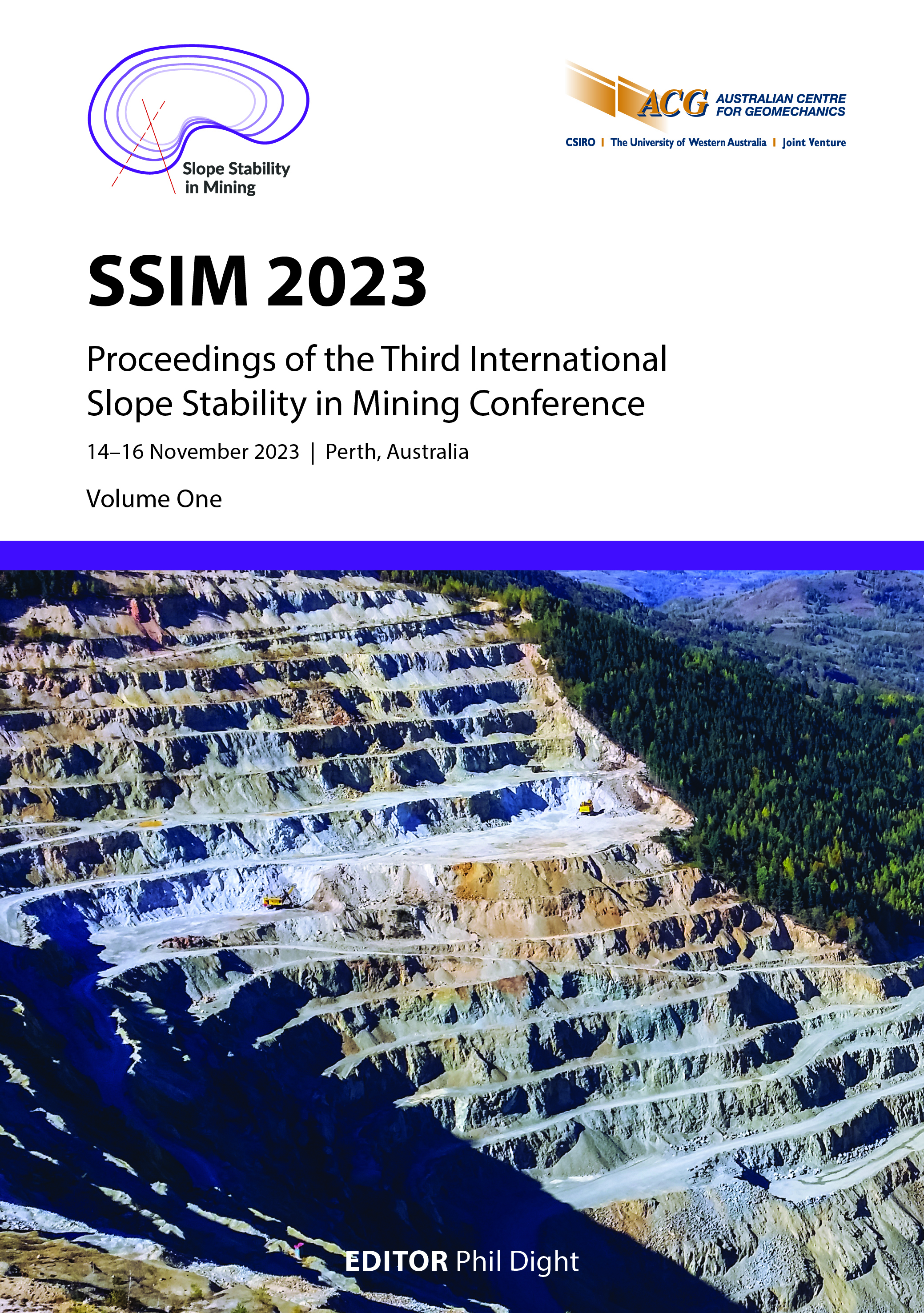Unconventional remote prism installation using a modified heavy payload release drone at Savage River mine

|
Authors: Woodward, C; Corbett, Z; Davies, A; Darlington, W; Snyders, I; Gregor, P; Venugopal, K; Reeve, A; Souza, L |
DOI https://doi.org/10.36487/ACG_repo/2335_52
Cite As:
Woodward, C, Corbett, Z, Davies, A, Darlington, W, Snyders, I, Gregor, P, Venugopal, K, Reeve, A & Souza, L 2023, 'Unconventional remote prism installation using a modified heavy payload release drone at Savage River mine', in PM Dight (ed.), SSIM 2023: Third International Slope Stability in Mining Conference, Australian Centre for Geomechanics, Perth, pp. 757-768, https://doi.org/10.36487/ACG_repo/2335_52
Abstract:
Monitoring prisms are a vital tool in open pit mining operations, providing critical information on the stability of highwalls. However, installation of these prisms can be challenging and time consuming, particularly in areas that are difficult to access on foot or where personnel may be exposed to geotechnical hazards. This paper explores the use of a modified heavy payload release drone (HPRD) to remotely install monitoring prisms in an open pit context, focusing on how the methods and technology were developed in partnership with Grange Resources and Taz Drone Solutions at the Savage River mine in Lutruwita/Tasmania. Installation involves securing the prisms to a prism holder specifically developed for this task, and then flying them into place with a HPRD. This paper outlines the technical requirements for the HPRD and prism holder as well as the key considerations when preparing for the installation campaign, such as identifying suitable locations to install prisms, planning take-off areas and conducting risk assessments. This paper covers examples of situations in which installation using a drone is warranted and outlines the risks and challenges faced during the installation process, such as landing in poor terrain and flying near magnetic rock and into deep pits with limited satellite coverage. This paper summarises the key advantages of using a HPRD to install monitoring prisms in an open pit context and provides planned areas of improvement. It also gives valuable insights into how to plan and execute a prism installation campaign using the HPRD, drawing on a specific case study from the Savage River mine.
Keywords: drone technology, prism installation, slope monitoring, risk management, automated total station monitoring
References:
Hutchison, BJ & Widelski, M 2007, ‘Rockfall management at Savage River mine’, in Y Potvin (ed.), Slope Stability 2007: Proceedings of the 2007 International Symposium on Rock Slope Stability in Open Pit Mining and Civil Engineering, Australian Centre for Geomechanics, Perth, pp. 379–392,
Little, M J 2006, ‘Slope monitoring strategy at PPRust open pit operation’, Proceedings of the International Symposium on Stability of Rock Slopes in Open Pit Mining and Civil Engineering, Southern African Institute of Mining and Metallurgy, Johannesburg, pp. 211–230,
Read, J & Stacey, P 2009, ‘Performance assessment and monitoring’, in J Read & P Stacey (eds), Guidelines for Open Pit Slope Design, CSIRO Publishing, Melbourne.
Welideniya, S, Bar, N & Price, J 2021, ‘Ground support in open pits and operational safety’, in PM Dight (ed.), SSIM 2021: Second International Slope Stability in Mining, Australian Centre for Geomechanics, Perth, pp. 287–294,
/ACG_repo/2135_18
© Copyright 2025, Australian Centre for Geomechanics (ACG), The University of Western Australia. All rights reserved.
View copyright/legal information
Please direct any queries or error reports to repository-acg@uwa.edu.au
View copyright/legal information
Please direct any queries or error reports to repository-acg@uwa.edu.au

